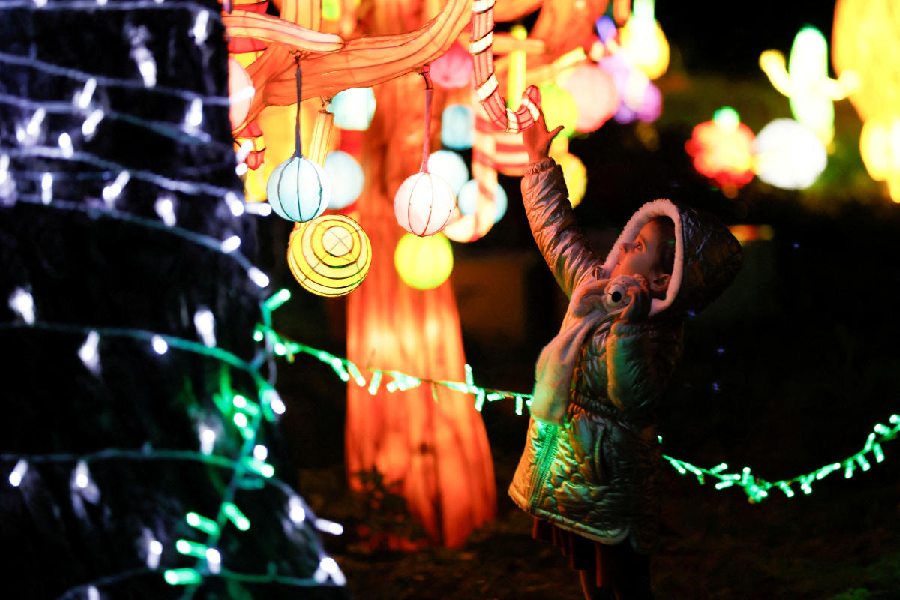 Monday, 23 December 2024
Monday, 23 December 2024
 Monday, 23 December 2024
Monday, 23 December 2024
The US National Weather Service extended air quality alerts for another day for the East Coast from New England to South Carolina, as well as parts of the Midwest, including Ohio, Indiana and Michigan. The haze and low visibility prompted aviation officials to halt incoming flights to major airports in New York and Philadelphia from the Northeast, Mid-Atlantic region and Ohio for a second day.
All flights bound for the airport in Newark, New Jersey, a major New York-area airport, were delayed. It was the worst outbreak of wildfire smoke to blanket the US Northeast in more than 20 years, according to private forecasting service AccuWeather.
The air quality in New York City was listed as “unhealthy” as of Wednesday morning. The haze across the city reduced visibility. Many weather stations in the Big Apple reported visibility of less than a mile. A ground stop was issued at Newark Liberty International Airport in New Jersey and LaGuardia Airport in New York City on Wednesday afternoon due to low visibility from the smoke and haze, according to the Federal aviation Administration.
Photos and videos shared on social media captured the eerie glow of the sun as it rose above some of the most famous skyscrapers in the Big Apple. The unusually poor air quality in the Northeast is “extremely rare in modern times,” according to AccuWeather Chief Meteorologist Jonathan Porter, and is like the levels of air pollution frequently observed in other parts of the world without the same air pollution standards and restrictions, including China, India, Southeast Asia, and even into South America.
Smoky conditions are likely to persist until Sunday when a new storm system shifts the direction of prevailing winds and brings a chance of rainfall in parts of the country nearing drought conditions, National Weather Service meteorologist Peter Mullinax said. With an "unhealthy" Air Quality Index reading of 178, New York City's air on Thursday was again more polluted than any major city in the world, topping cities such as Dhaka and Hanoi that are fixtures on the global bad-air list compiled by IQAir, a Swiss technology company.
Within the United States, the worst air was found in locations in Maryland, Pennsylvania and Delaware, where some readings exceeded 300. Some suburbs of Baltimore and Philadelphia topped 400. Advised to stay indoors, residents of New York, Washington and other big cities donned masks and scrambled to buy air purifiers to protect themselves from the yellow haze.
In Washington, public schools called off outdoor activities, including sports, for a second day. "This problem is likely to continue or worsen through Friday," Washington Mayor Muriel Bowser said in a tweet. "We urge residents and visitors to follow precautions related to the 'Code Purple' air quality alert."
Large swaths of Michigan are also under red flag warnings due to dangerous fire weather conditions in both of the state's peninsulas, according to the weather agency. AccuWeather forecasters say the wildfire season in Canada got off to a devastatingly early start. As of early June, more than 8 million acres of land have been scorched by wildfires across Canada, according to the Canadian Interagency Forest Fire Centre (CIFFC). The CIFFC was tracking more than 400 active fires across the nation Monday.
For those who must work outside, the state recommended that people wear an N95 mask, several schools in New Jersey cancelled recess and other outdoor activities, due to the air quality across the state. “People should frequently check the AccuWeather exclusive Plume Labs air quality maps and limit their time outdoors,” said Porter, who recommended that if one must spend time outside, to use a high-quality N95 or KN95 mask.
Forest fires continued to burn across Canada on Thursday, sending more smoke across the U.S. border. The country is enduring its worst-ever start to wildfire season. Thousands of Canadians have been forced from their homes and about 3.8 million hectares (9.4 million acres) have already burned, roughly 15 times the 10-year average, according to federal Minister of Emergency Preparedness Bill Blair.







